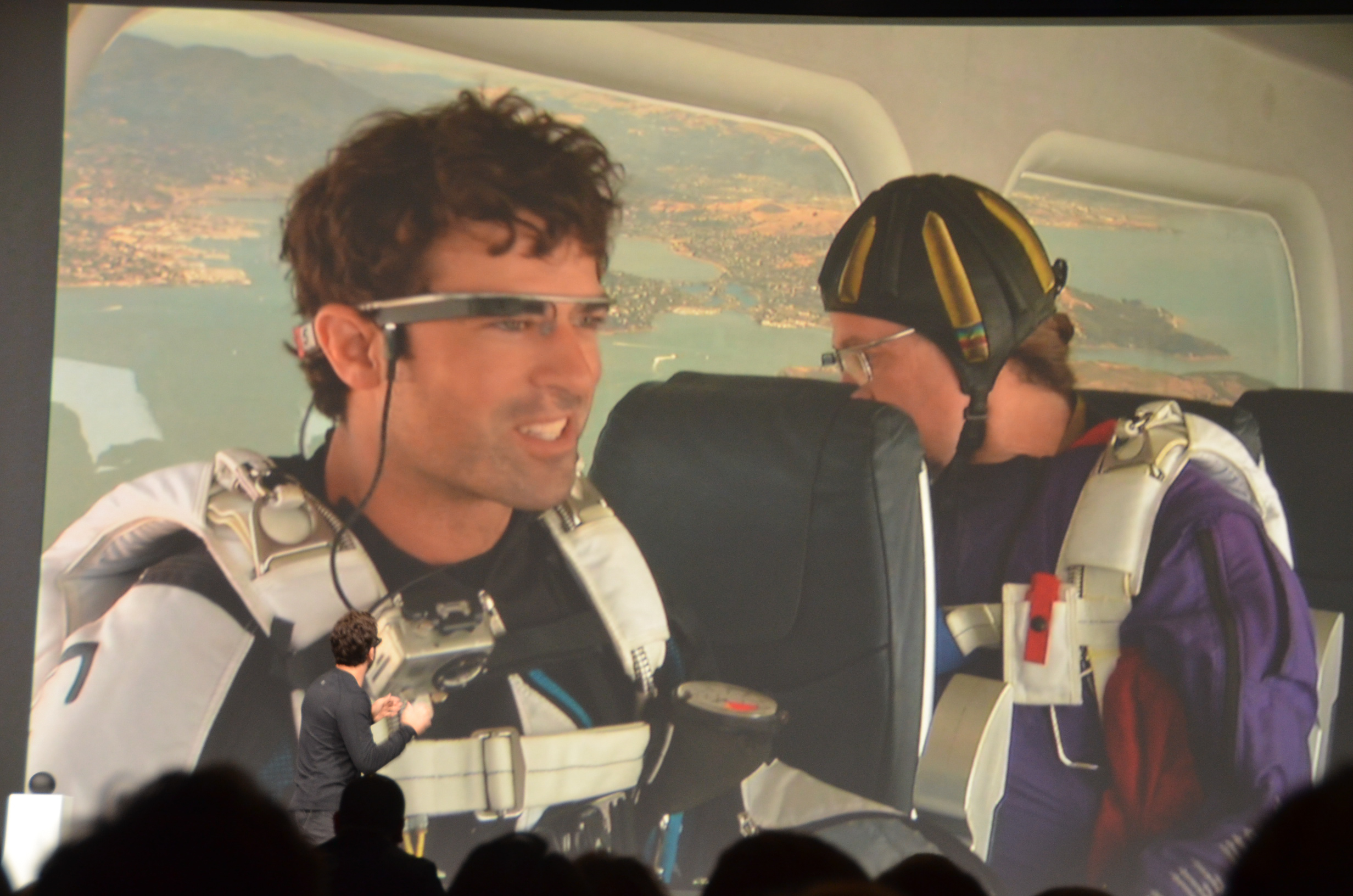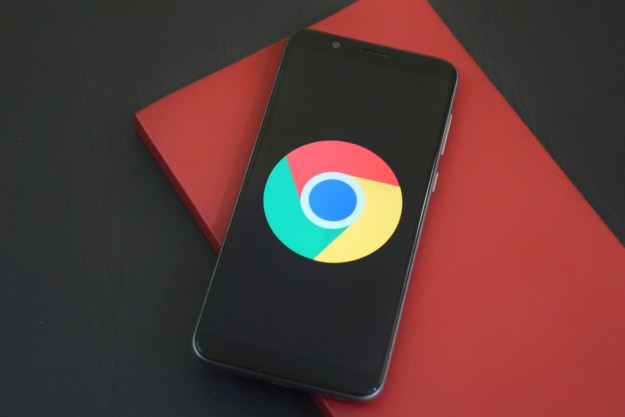The introduction of Google Glass during the Google I/O 2012 keynote presentation was Google at its feisty, unpredictable best. It marked the beginning of the groundbreaking wearable device’s short, tumultuous life as a consumer product, and was truly representative of what made Google such an exciting company at the time.
But Google I/O 2012 also introduced another crucial piece of Google hardware, the Nexus 7. However, the modest little tablet’s resulting life had a very different direction indeed. As the 10th anniversary of these products approaches, and on the cusp of Google I/O 2022, we celebrate them both in a pair of retrospectives, beginning with Google Glass.
Falling from the sky
“You have to want to be on the bleeding edge.”
That’s how Google’s Sergey Brin described anyone wanting to buy Google Glass after its introduction at Google I/O 2012, where its potential had just been shown off with aplomb by skydivers and stunt cyclists. Looking back at the presentation today, it’s magnificently clunky. It isn’t that polished, the video feed from Glass is glitchy, the data connection unreliable, and the nature of the live event made the script and the many high-fives embarrassingly awkward.
But that’s hindsight, and at the time it was ridiculously thrilling, and truly reflected what made Google a firm favorite with tech geeks. There was a feeling the company was operated by people like us, and Glass was exactly the kind of sci-fi-inspired product we’d be experimenting with if we were part of a team of very clever people and had billions of dollars at our disposal. The fact it was there on stage, looking like it came from Star Trek, was exciting enough, but that it was really going on sale was the stuff of dreams.
At first, Glass was about as exclusive as tech gets. Only those attending Google I/O would be able to pre-order the very first Explorer Edition devices, and only if they had $1,500 in their pockets. They’d also have to wait until the next year for it to actually be delivered. At that time the price was outrageous — the Apple iPhone 5 cost $649 when it launched in September 2012 — yet many enthusiastic tech fans would have gladly handed it over to own Glass at that moment.
The fervor around Glass was short-lived. Almost immediately after launch, controversy stalked it. It became a device that attracted as much hatred as it did interest, and managed to kickstart wide-ranging conversations about privacy that still echo today. A BBC report from 2014 has a collection of official statements from companies like Starbucks, Virgin Fitness, a theater chain, and a hospital on how customers should use Glass. Has there been any other single piece of consumer technology that has had such specific guidelines on its use since then? It’s incredible to look back on.
Misunderstood, and ignored
Glass’ social problems weren’t the only thing it failed to overcome. It also couldn’t crack mainstream understanding and acceptance, as the situation in which I purchased my own Google Glass in early 2015 illustrated. I remember being handed the unopened Google Glass box by the eBay seller I’d purchased it from, who paused before saying:
“Do you know what it is, then?”
This wasn’t long after Glass’s official launch in the U.K., and a company — I forget which one, but it had nothing to do with tech at all — had run a competition where Glass was provided as a runnera-up prize. A lot of people won it, but it seemed not many wanted to try it out and put it on their faces, and a lot of Google Glass units began showing up on eBay. People weren’t interested, put off either by the controversy or the prospect of wearing a piece of tech.
I paid 500 British pounds, or around $625 today, for it, which was half the retail cost. It wasn’t even the cheapest on eBay, but it was the closest to me and I could collect it in person. It’s quite hard to imagine what a bizarre juxtaposition this was. Glass was at once one of the hottest, most talked-about pieces of new tech, yet at the same time was so completely divisive and undesirable that it couldn’t retain its actual value.
Not everyone hated it
I bought Glass to use it. It has fascinated me since I first saw it at Google I/O 2012, and I wrote about it quite often. One memorable time, I visited a company that had a peripheral that allowed you to control Glass with your mind. But I still wanted to experience living with it myself, so I began to wear Glass on a regular basis.
It was the ultimate tech conversation piece, and I don’t think it has really been surpassed in this respect. I wore Glass to a comic book convention in London and got more attention than some of the cosplayers. A man once ran to catch up with me at a train station, then breathlessly asked if I worked for Google and, if so, could I get him Glass. It was always fun to let people try Glass out — it was just so new, so completely unlike anything else. Only the original Samsung Galaxy Fold has come close to having this affect on people since.

Beyond the odd “Are you recording right now?” question — always asked jokingly, mind you — and a few stares, I never experienced any anger or ridicule around Glass. I was self-conscious about wearing it at first, but it soon passed and I began to actually enjoy using it in the way it was intended. I liked the notifications, it was really cool to look up into the night sky and see a star map on the little screen pinpoint the constellations in real time, and it was excellent for recording video or shooting stills hands-free.
But in all the time I wore Glass, I never came across any other member of the public wearing it. It was a more regular sight at large industry events like Mobile World Congress, although even then, there may have only been one or two Glass wearers among the thousands attending. Soon after this period though, it effectively just disappeared. Glass, despite being on the “bleeding edge” of tech, became an enigma. Referenced, but rarely seen, hunted almost to extinction because it was not only different, but condemned as dangerously different.
I fired up Glass for the first time since 2019 when writing this piece. The device itself works, but nothing else around it does. It connects to my phone using Bluetooth, but the companion app is long gone from Google Play and the App Store, and even the website required for Glass to join a new Wi-Fi network returns a 404 error. I took a photo with it, but there’s no way easily share it anywhere due to its integration with the long-dead Google+ network. My Google Glass is now nothing more than a tech curio.
The last, big public hardware beta test
When Google Glass received its debut during Google I/O 2012, the company was changing. Eric Schmidt, Google’s then CEO, had stepped down, the Google+ social network had launched and signified the start of a new and different direction, plus the company had recently made more than $10 billion in profit for the first time, and had announced plans to hire more new staff than ever before.
But Glass predated all this, and Brin had introduced it at Google I/O 2012 as the result of two-and-a-half years work. Glass appeared to have come from a team of daring, innovative, perhaps even a little misguided tech geeks, and not that of a giant technology conglomerate, where teams of lawyers would have poured over every potential negative outcome, ready to stifle such madness as a potentially always-on camera on your face. Glass came before Alphabet, and if it had needed another year of development before being shown to the public, I wonder if it would ever been shown as a consumer product at all.
Glass may be one of the very last truly “beta” products to be put up on a global stage.
Google Glass at the 2012 Google I/O keynote seemed like Google at its most creative, unafraid to do something totally new, damn the consequences. It was a hugely ambitious, barely finished, questionably conceived, and fantastically thrilling product, and so forward-thinking that despite similar products having launched since then, it hasn’t really been matched.
Unfortunately, it may be one of the very last truly “beta” products to be put up on a global stage and then sent out into the wild for people to experiment with. The resulting uproar no doubt made other companies thinking about sharing their own crazy projects reconsider — and we’re worse off for it. Google I/O 2022 will undoubtedly be a polished, on-brand event, and rumors of new hardware make it one to anticipate. However, it’s unlikely to reach the audacious yet scrappy heights that I/O 2012 and the introduction of Google Glass did.
Editors' Recommendations
- The 6 biggest announcements we expect from Google I/O 2024
- There’s only one reason I’m still using an iPhone in 2023
- Forget waiting for Google I/O — the Pixel Fold just had a huge leak
- Google I/O 2023 is happening on May 10 with an in-person event
- Sorry, Google — Apple is right to keep ignoring RCS for the iPhone







